#harappan culture
Text
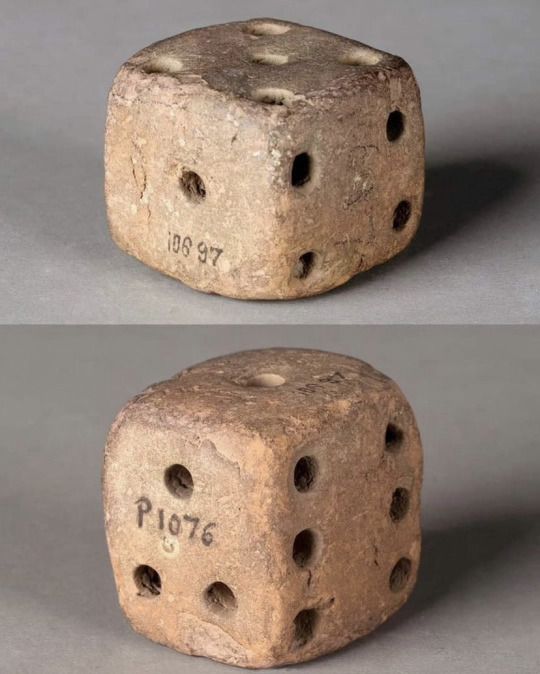
Pair of smol Terracotta dice
Harappa (2600-1800 BCE), an ancient city from the Indus Valley Civilization, modern day Punjab, Pakistan
Many were found in Mohenjo-daro as well, another central ancient city of the Indus Valley in modern day Sindh, Pakistan.
Mostly cube-shaped, sizes range from 1.2 by 1.2 by 1.2 inches to of 1.5 by 1.5 by 1.5 inches
#art#archaeology#sculpture#ancient#ancient art#harappan civilization#indus valley#indus valley civilization#african art#african culture#punjab#sindh#ancient culture
247 notes
·
View notes
Text


An attempt was made to see how this IVC priest king would really look like irl :)
#historical art#ancient civilizations#indus valley#indus valley civilization#harappan civilization#history art#ancient history#ancient india#history#desiblr#desi tumblr#desi tag#desiposting#ancient city#ancient cultures#ancient
21 notes
·
View notes
Text
It's so funny how sanghiblr will selectively criticize NCERT. They will harass them for sources about medieval and mughal history, but will parrot the "harappan and vedic civilisations are one and the same" bullshit in NCERT that has been proven to be false. Because that one fits their agenda and the ridiculous claim that aryans are indigenous or whatever.
#fr i reseached this a lot#its possible that harappans migrated south and in that case its dravidians that have the claim to indigeneity#aryans migrated from central asia they are foreigners as much as mughals are#and vedic culture is aryan culture by and large#ofc it is influenced by dravidian folk religions as things will influence each other but dravidian folk religions existed first#and in time got overshadowed by vedic culture#tho some aspects still survive. and that explains why south indian hinduism is so different#same thing happened with austro-asiatic religions in east asia#which is why bengali hinduism has a distinct flavour of tribalism and tantrikism#its so interesting fr id love to study it more#im too tired to source all my yapping in the tags but if you want to learn more then hmu with an ask ill happily recommend books/articles#sanghi bs#anti hindutva
4 notes
·
View notes
Text
Explore Dholavira with our Comprehensive Tourist Guide
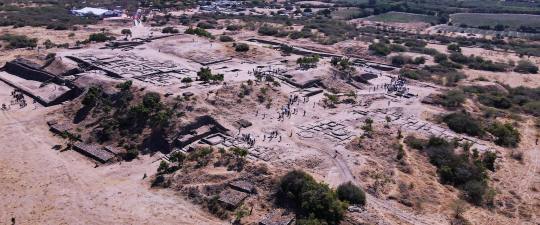
Embark on a journey to the ancient Harappan sites in Dholavira Explore its rich history, find the best places to see, and experience luxury at Evoke Dholavira Plan your visit with our Complete Dholavira Tourist Guide.
#Harappan civilization#Dholavira archaeological site#Ancient history#Indus Valley civilization#Archaeological excavation#Ancient ruins#Cultural heritage#Civilization remnants
0 notes
Text
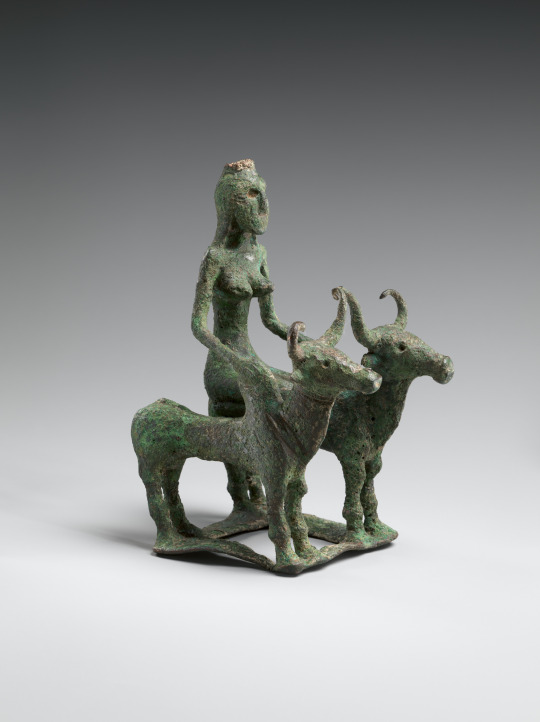
Woman Riding Two Brahman Bulls
India (Kausambi), 2000–1750 BCE
This remarkable object is a rare survivor of the early bronze culture associated with the late Harappan civilization shared across northern India and the Indus Valley (Pakistan) in the second millennium B.C.
113 notes
·
View notes
Photo
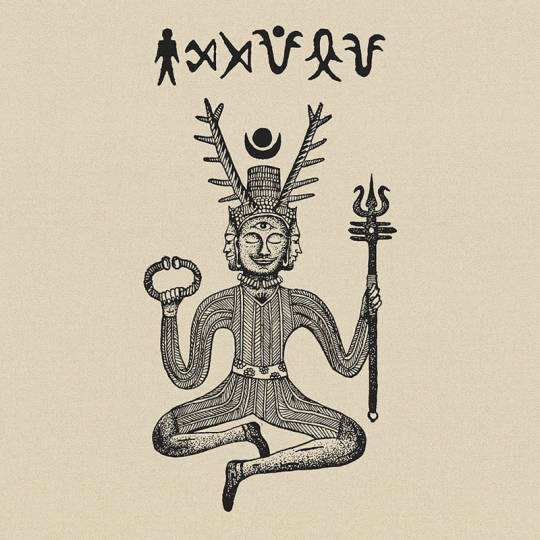

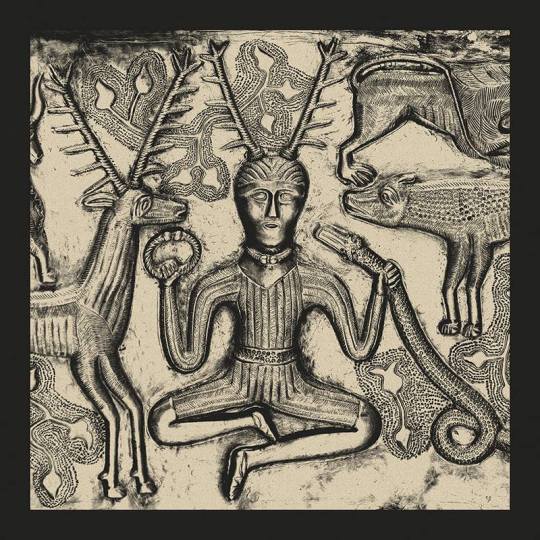
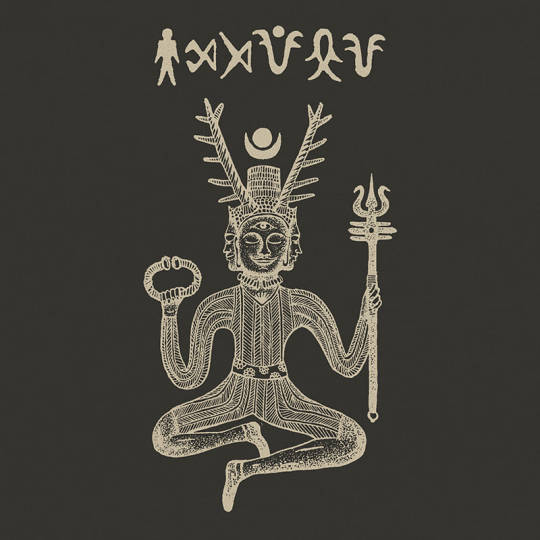
PASHUPATI (Master of Animals)
Found in Mohenjo-daro (2500 BCE) from the Harappan culture (8,000BCE)
(Image 2)
CERNUNNOS (Horned God)
Found in Denmark, on the Gundestrup cauldron (200BC - Originating in Greece)
(Image 3)
🐍 Its well noted that the names of rivers like the Don, Dneiper, Dneister, Donets and Danube to the north of the Black Sea are largely cognate with the Sanskrit, Danu. Many ancient European peoples, particularly the Celts, regarded themselves as children of Danu, with Danu meaning Mother Goddess, who was also, like Sarasvati in the Rig Veda, a river Goddess. The Celts called themselves “Tuatha De Danaan” as did the mythical pagan rulers of Ireland around 2000BC.
The word Danu could reflect such a movement of peoples from West or Central Asia, including migrants originally from regions of greater India and Iran. At the end of the Ice Age, as Europe became warmer, it became a suitable land for agriculture. Ancient European river names like the Danube and various rivers called Don in Russia, Scotland, North England and France reflect this.
Danu is probably, in some respects, a synonym of Maya, from the sons of Diti, a wife of Kashyapa, who is sometimes equated with Danu and also known as Sumaya, having a divine (Su) power (Maya).
Like the root Ma, the root Da means “to divide” or “to measure”. Maya is the power of the Danavas but also their illusion. Maya itself is the serpent power.
With Rudra (Shiva) as their father and Prishni (Shakti) as their mother, they reflect all the Gods of later Hinduism.
Perhaps these Sudanavas (Danu) guided many peoples including the Celts and other Europeans. It could also be argued that the Sudanavas were the Maruts, Druids and other Rishi classes who carried the ancient knowledge of magic from northern India, across to Europe via the middle east in a wave of tribal migrations.
🌿The legend of Pashupati can be found in reference to Shiva, as his proto-type. In the Skanda Purana it tells how Shiva used to love a great forest called the 'Sleshmantaka Forest’, where he meditated in the form of a deer.
🌿Cernunnos presided over pristine nature and was skilled in bringing wild beasts into peaceful communion.
Ventral Is Golden
160 notes
·
View notes
Text
India has a rich and complex history that spans thousands of years. Here is a detailed timeline of some of the major events and developments in Indian history:
3300 BCE - 1300 BCE: Indus Valley Civilization
The Indus Valley civilization, also known as the Harappan civilization, was one of the world's earliest urban civilizations. It was located in the northwestern part of the Indian subcontinent and is known for its advanced urban planning, art, and script.
1500 BCE - 500 BCE: Vedic Period
The Vedic period is named after the Vedas, a collection of hymns and religious texts that were composed during this time. It is also known as the early Hindu period and is characterized by the development of Hinduism, the caste system, and the emergence of the Mahajanapadas.
322 BCE - 185 BCE: Mauryan Empire
The Mauryan Empire was the first dynasty to unify most of India under a single ruler, Chandragupta Maurya. Under the rule of the Mauryan dynasty, India saw significant economic, cultural, and religious growth.
320 CE - 550 CE: Gupta Empire
The Gupta Empire was a golden age of Indian civilization. It is known for its advancements in science, mathematics, art, and literature. During this period, the decimal system, the concept of zero, and the Hindu-Arabic numeral system were developed.
711 CE - 1206 CE: Islamic InvasionsIslamic invasions began in the early 8th century, when Arab armies conquered the Sindh region in present-day Pakistan. Over the next few centuries, Muslim rulers established several dynasties in India, including the Delhi Sultanate.
1526 CE - 1707 CE: Mughal Empire
The Mughal Empire was the most powerful empire in India during the medieval period. It was founded by Babur and ruled by a succession of Mughal emperors, including Akbar, Jahangir, and Shah Jahan. The Mughal era saw significant cultural growth, including the establishment of the Taj Mahal and the development of Mughal art and architecture.
1757 CE - 1858 CE: British East India Company
The British East India Company established itself as a major political and economic force in India during the 18th century. It gradually expanded its control over Indian territories, eventually ruling over the entire country by the mid-19th century.
1857 CE - 1947 CE: British Raj
The British Raj was the period of British colonial rule in India, which lasted from 1858 to 1947. During this time, India underwent significant economic, social, and political changes, including the establishment of railways, telegraphs, and a modern legal system. The Indian independence movement gained momentum during this period, eventually leading to India's independence in 1947.
1947 CE - present: Independent India
India gained independence from Britishrule on August 15, 1947, and became a democratic republic on January 26, 1950. Jawaharlal Nehru became India's first Prime Minister and led the country through a period of modernization and economic growth. India faced several challenges, including partition, communal violence, and poverty. The country also adopted a non-aligned foreign policy and played a prominent role in the Non-Aligned Movement. India also conducted several nuclear tests in 1974 and 1998, which brought the country into the global spotlight.
In recent years, India has emerged as a major economic power, with a rapidly growing economy and a burgeoning tech sector. The country has also faced several challenges, including political and social unrest, environmental degradation, and growing inequality. India's relations with its neighbors, particularly Pakistan and China, have been a source of tension, and the country has also faced security threats from terrorism and insurgency. The country is also grappling with issues of caste discrimination, gender inequality, and religious intolerance.
In conclusion, India's history is a rich tapestry of cultural, religious, and political developments that have shaped the country into what it is today. From the ancient Indus Valley civilization to the modern-day tech hub, India's history is a testament to the resilience and diversity of its people.
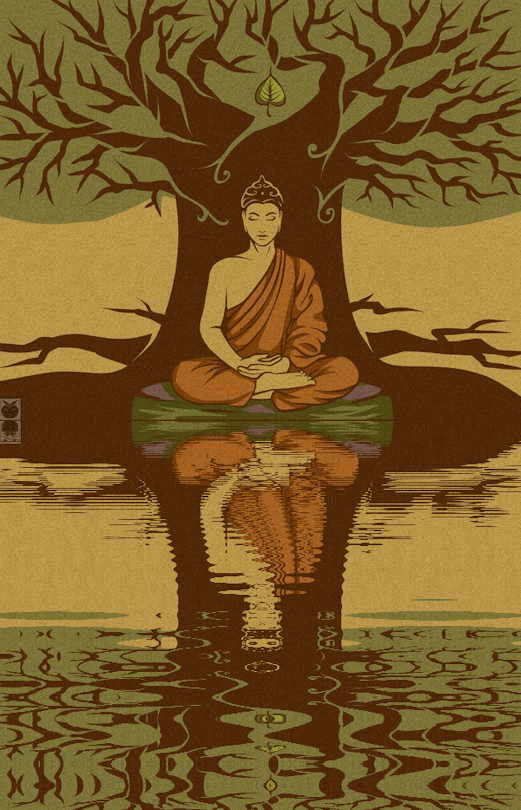
17 notes
·
View notes
Text
Harappan Dancer
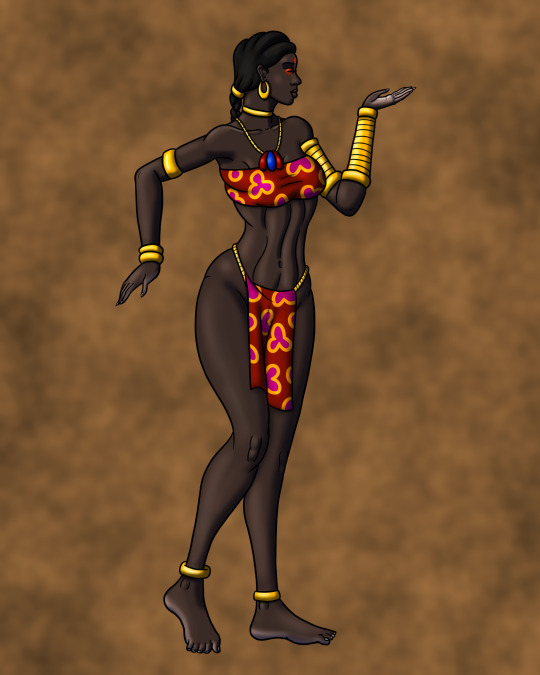
This is a female dancer from the Harappan civilization that spread over the Indus Valley in South Asia between 3300 and 1300 BC, being the first urban culture known to develop in the subcontinent. Her jewelry is referenced from a bronze statuette uncovered at the Harappan site of Mohenjo-daro in what is now northern Pakistan, but whereas the original sculpture showed a nude figure, I gave my version a top and loincloth to make it safer for work.
#Harappan#Indus Valley Civilization#indian#south asian#dravidian#dark skin#black woman#woman of color#digital art#art
3 notes
·
View notes
Text
I need to put my thoughts in order.
I had a very long, and ultimately very good, but nonetheless frustrating conversation with a friend about history. They knew quite a bit more about the last 400 years in Europe than I do and they wanted to tell me about what they knew.
Which was fun. But the theme of the conversation ultimately bent around hopelessness and the nature of humanity.
They wanted to talk about terrible things that people had done. Royal families. Fascism. Individual people who were responsible for terrifying inhuman depravity. And.
And they knew ~so much~ about the human capacity for violence and terror that I struggled to defend my conviction that ~mostly we just want things to be better for ourselves.~
I’m very interested in ancient history. And archeology. I’m subscribed to the antiquities journal which I’ve been tearing up for the last few months.
Mostly archeology news looks like this:
“A cemetery in a highland Tajik village was discovered to observe Islamic burial customs - carbon dated to c. 800s CE -”
Or
“A tomb in Armenia was discovered with an image of a procession of gods - dated to the 870s BCE based on carbon dating and a reference to Assurnasirpal II - figures identified as belonging to the local religion are depicted besides other figures from the Assyrian religious tradition”
BORING SHIT, RIGHT?? But the synthesis of a lot of boring information can let people make better judgements of what the past was like. And in these boring cases we don’t see much violence.
That village of medieval Tajiks seems to have adopted Islamic burial customs without terrifying bloody conflict. - there would have been evidence for this by way of damaged skeletons. - They seem to have been attracted by the wisdom of traveling Muslims, and they were willing to bring new information into their worldview.
And those Assyrian-Armenian artists were simply interested in the fashions and prestige associated with Assyrian courtly culture, and they wanted to depict their local gods belonging to that tradition.
AND ALMOST EVERY NEW ARCHEOLOGICAL DISCOVERY IS LIKE THIS.
Humble. Peaceful. Curious.
29 times out of 30, the material evidence for human activity is, like, a campfire. Or art. Or houses where there are toys and shoes.
But on the internet, that’s not interesting like violence.
My friend listens to podcasts that are about violence in history. Pretty much exclusively it seems.
And most people who are interested in history are similarly attracted to ~the craziest things that have happened~ because of course they are!! It’s more fun!! Ancient stories of heroism and war were popular for the same reason!! Everyone likes a good horror story to pull out from and shiver and say “gosh I can’t believe people ever lived like that”
But.
But there is so so much information on the internet.
You can immerse yourself in oceans of historic violence forever.
And when you do that. It seems like that’s what’s usual. Even though it’s not.
And this is how ALMOST EVERYONE seems to engage with history!!! To such an extant that whenever I suggest that humanity is not inherently depraved, and maybe we’re not doomed to maul ourselves into oblivion forever, most people are wholly dismissive, armed with a thousand case-studies in our worst behavior.
And it frustrates me so much !!!!! What on earth should I say? Should I explain how excited it makes me to see pictures of makeup from ancient Egypt? Plumbing in Chalcolithic Harappan cities? Animal-shaped Incan toys with wheels that look so cute and so fun for little kids to play with?
Almost everyone I know is trying to build a better life for their people. And it really seems like that’s what almost all of us have been trying to do for tens of thousands of years.
We just do it quietly, and I wish more people knew that. It’s hard enough out here.
#ancient history#history#humanity#I just think we’re going to be ok. I think it’s going to be hard and scary but I think it’s going to be ok.#sorry for the rant
8 notes
·
View notes
Photo


Nagakal at Kaadu Malleshwara Temple, Bengaluru, Karnataka
A Seeker wrote :
"अनन्तं वासुकिं शेषं पद्मनाभं च कम्बलं शन्खपालं ध्रूतराष्ट्रं च तक्षकं कालियं तथा |"
Nagas, an ancient clan with highly developed culture existed in India. The Nagas were mainly serpent worshippers.
After the Aryan invasion into the land beyond River Sindhu, the Nagas, and other clans were pushed further down in to the Dravidian heartland. But, sooner or later, the Aryans themselves accepted many of the snake deities of the Nagas in to their pantheon. The prominent Cobra snakes mentioned in the Puranas are Anantha, Vasuki, Shesha, Padma, Kanwal, Karkotaka, Kalia, Aswatar, Takshaka, Sankhpala, Dhritarashtra and Pingala. As per the historians, these were not the snakes but the powerful Naga Kings.
There is very few evidence left as of what happened to the originals Nagas, and other Harappan people, who at that time of history had an advanced civilization unlike the barbarians from the West. The irony is that the invaders soon realized the importance of society, civilization, religion, customs, and incorporated most of that belonging to Indus valley civilization, they uprooted on the first place. The Nairs of Kerala, and the Bunts of Tulunadu often claim direct descendance from Nagas who migrated South.
(via Instagram: A Seeker @raconteur_sufi)
49 notes
·
View notes
Text
What's that stupid ass quote about how all archaeologists only want to make discoveries in order to make their rivals and all of them are lying to themselves when they say that they are doing this work to record history. Horrible take. Speak for yourself madam. I am sitting here sweltering in the computer room of my house hooting and hollering at my screen because of the possibility of the existence of trade relations and cultural interactions between the Akkadian and Harappan civilizations
3 notes
·
View notes
Photo
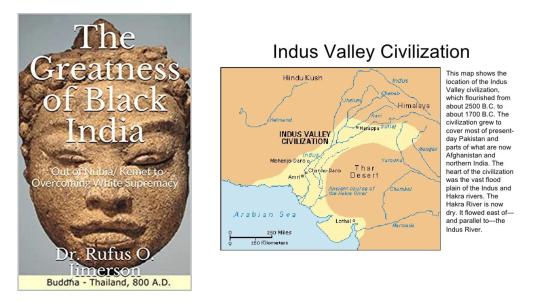

New Blog. The Greatness of Black India: The Dravido-Harappans of the Indus Valley Civilization
The Indus Valley Civilization was founded by the Dravido-Harappan people and is one of the world’s largest and oldest civilizations. https://bit.ly/3zJQjN9
“India would experience many magnificent ‘transformations,’ spurned and perpetuated by the race, which gave India her first civilization and culture‒the Black race.” - Wayne B. Chandler, African Presence in Early Asia, p. 105
8 notes
·
View notes
Text
Indian History
The heading might seem like a monologue to most people but Indian history is one of the topics close to my heart and it makes me hold my head high to belong to a country with such magnificent heritage. Despite being a student of Science, I’ve always felt a connection with the subject which always motivates me to peruse books and get an even bigger glimpse into the world of kings and queens, of artists and magicians, a time when people lived without the technology which has become an imminent part of the modern world today, a time when music had the power to bring rain, a time when bullock carts were the only transport available to man and a time when splendour reigned our country, the time when India was called ‘The Golden Bird’. The real reason why I'm writing this is because I feel that history is highly underrated and is a victim of generations of hatred, with literally every student crying tears of frustration as they try to memorize the names and dates on the last day of the exams, cramming everything into their minds and just writing it all out on the exam sheet, never to think of it again. But the fact remains that history is not just mugging up books as we picture when we hear the word- it’s way more than that. History is not just a subject, it's a reminder of all the great deeds that our ancestors have done, of where our roots come from and a constant lesson to us that no matter how tough things seem, there's always a solution- you just have to look for it. It all started with the Rigveda, the oldest, most pure age of ancient history when women were given an equal status to men, their activities were not constantly frowned upon and when God was worshipped with actual devotedness and not just for our selfish benefits as it is today. Following it, was the Yajurveda, then the Samaveda and finally the Atharvaveda. As the civilisations came to pass, we find that the stature of women in society continued to deteriorate before finally reducing this irreplaceable half of the society as slaves of their counterparts. Harappan and Indus Valley Civilizations have left a lasting mark on our country as we find out how intelligent and broad minded the people of those times were- the ruins a symbol of a fallen legacy. The Mauryan Empire was next up as it started the trend of conquering kingdoms and having kings and queens with Chandragupta Maurya as the founder, one of the greatest rulers India has known. The Magadha dynasty brought with it the ideas of provinces and states, of efficient management and luxurious royal lifestyle, making it one of the most remembered dynasties that we have had. The South saw its own share of royal ages as it was ruled by the Cholas, the Cheras and the Pandyas. The Gupta empire came into being soon after, one of the most ancient and prosperous ages of the country's empires. Delhi soon became a vital city of attraction for conquerers all over the world as the Delhi Sultanate was founded by Qutubuddin Aibak beginning with the Slave Dynasty, then the Khilji Dynasty, Tughlaq, Sayyid and Lodi dynasties ending only when Babur defeated Ibrahim Lodi and took on the throne of Delhi. The ever powerful Mughals then ruled Indian for many years, with Babur followed by Humayun, Akbar, Jahangir, Shah Jahan and Aurangzeb. The Mughal empire deteriorated after Aurangzeb and their mighty legacy ended with the death of Bahadur Shah Zafar at the hands of the British. The British ruled us for 150 years or so which saw some of the most challenging and revolting events in Indian history including the Partition of India, the formation of the Indian National Congress, the revolt of 1857 and expulsion of the British from India in 1947. From then onwards, India has been her own master and has flourished through hurdles and disappointments. It is my pride to have had a chance to read about our beautiful and ever inspiring culture and even more to be able to bring it out in words for you all. Its not just something to be proud of, it belongs to me and to every Indian who has the honour of being born on this soil.
4 notes
·
View notes
Text
Detailed information about Gujarat state.

Gujarat itself is a historical, art and diversified state of India. The land of Gujarat has given birth to many great sons, which include Mahatma Gandhi, Sardar Vallabhbhai Patel, Morarji Desai, Narendra Modi, Vikram Sarabhai, Amit Shah and other names.in detailed information about gujarat state given below.
Gujarat, which is called the Manchester of India, is known for being a leader in its cotton textile production, industrial sector. Gujarat is a coastal state and the state of Gujarat has the longest coastline among the states.This lush green state boasts of many variations. Nature has made it wonderfully like river, lake, beach, forest, and Rann of Kutch. Gujarat has about forty sites in the UNESCO World Heritage Sites. The mountain of Gir itself boasts a new natural world, the Asiatic lion of Gir National Park is famous all over the world.
The history of Gujarat is very old. Twenty-three sites related to Harappan civilization have been found in Gujarat, which include Lothal, Dholavira, Goladhaura, etc. Most sites of Indus Valli Civilization have been discovered after India’s independence. Gujarat was ruled by many rulers, including Maurya Dynasty, Kshatrapa Dynasty, Satavahana Dynasty, Gupta Dynasty, Chalukya Dynasty, Rashtrakuta Dynasty, Pala Dynasty, and Gurjara Pratihara Dynasty.
Due to the rule of many dynasties, Gujarat’s culture, art, literature, language, way of life, is full of diversity. Despite this, people of every religion community like Hindu, Muslim, Sikh, Christian, Parsi, Jain, Buddhist etc. are living in harmony with their language and culture.
Let us now see the geographical, political, social, historical form of Gujarat such as the establishment, capital, total area, location, border states, total population, high court, male, female population, total literacy rate, male and female literacy. Rate, Density Sex-Ratio, Lagislature, Lok Sabha and Rajya Sabha Seats, Current Affairs, Gujarat State Government and Council of Ministers, Festivals, Lakes, Reverse, Tourist Destination and Places, Religious Places of Gujarat State and Famous Personality.
visit more information click here- indiannovel.com
#history#knowledge#world history#gujarat#india#fact of india#india state#gujarat most populated state in india
5 notes
·
View notes
Text
Timeline: A Journey Through Human History
The timeline of human history stretches back thousands of years, encompassing a tapestry of events, innovations, and civilizations that have shaped the world we inhabit today. It begins in the distant past, during the Paleolithic era, when early Homo sapiens roamed the earth as nomadic hunter-gatherers, fashioning rudimentary tools and harnessing fire for warmth and protection. Over millennia, these early humans gradually developed sophisticated hunting techniques and communal living arrangements, laying the groundwork for the emergence of more complex societies.
The Neolithic Revolution marks a pivotal turning point in human history, as communities transitioned from a nomadic lifestyle to settled agriculture. This transformative period, which unfolded around 10,000 BCE, witnessed the domestication of plants and animals, leading to the establishment of permanent settlements and the development of agricultural techniques. With the ability to cultivate crops and raise livestock, humans no longer depended solely on hunting and foraging for sustenance, paving the way for population growth, specialization of labor, and the rise of early civilizations.
The Bronze Age, spanning from around 3300 to 1200 BCE, witnessed the widespread use of bronze tools and weapons, ushering in a new era of technological advancement and cultural exchange. In Mesopotamia, the Sumerians built the world's first cities, such as Ur and Uruk, while in Egypt, the construction of monumental pyramids and temples reflected the power and authority of pharaohs. Meanwhile, in the Indus Valley, the Harappan civilization flourished, boasting well-planned cities and sophisticated drainage systems.
The Iron Age, which followed the Bronze Age, saw the widespread adoption of iron tools and weapons, leading to further advancements in agriculture, warfare, and trade. During this period, empires such as the Assyrians, Babylonians, and Persians rose to prominence, establishing vast territorial dominions and exerting influence over surrounding regions. In Greece, the development of city-states like Athens and Sparta laid the foundation for democracy and philosophy, while in India, the Maurya and Gupta empires fostered a rich cultural heritage of art, literature, and religion.
The Classical Era, spanning from around 500 BCE to 500 CE, witnessed the zenith of ancient civilizations and the flourishing of intellectual and artistic achievements. In Greece, the golden age of Pericles saw the construction of the Parthenon and the emergence of great thinkers like Socrates, Plato, and Aristotle. Meanwhile, in Rome, the Republic gave way to the mighty Roman Empire, which expanded its dominion across the Mediterranean world, fostering unparalleled advancements in law, engineering, and governance.
The Middle Ages, spanning from around 500 to 1500 CE, were characterized by the fragmentation of classical civilizations and the rise of feudalism in Europe. Amidst the chaos of invasions and migrations, the Christian Church emerged as a unifying force, shaping the spiritual and political landscape of medieval Europe. The feudal system, characterized by a hierarchical structure of lords, vassals, and serfs, governed daily life, while knights and crusaders embarked on quests for glory and piety.
The Renaissance, which began in Italy in the 14th century and spread throughout Europe, marked a rebirth of classical learning and artistic expression. From the masterpieces of Leonardo da Vinci to the scientific inquiries of Galileo Galilei, the Renaissance ushered in an era of enlightenment and humanism that laid the groundwork for the modern world. Meanwhile, the Age of Exploration opened new frontiers of discovery and conquest, as European powers embarked on ambitious voyages of trade and colonization, reshaping global geography and igniting the flames of globalization.
The Industrial Revolution, which began in Britain in the late 18th century, ushered in a period of unprecedented technological innovation and economic growth. From the steam engine to the spinning jenny, mechanization and mass production revolutionized manufacturing and transportation, transforming the fabric of daily life and paving the way for urbanization and industrialization on a global scale. Meanwhile, the 19th century witnessed the rise of imperialism and nationalism, as European powers vied for colonial supremacy and the struggle for independence swept across the globe.
The 20th century witnessed the tumultuous upheavals of two world wars, revolutions, and technological revolutions. From the devastation of the Great War to the rise of totalitarian regimes and the struggle for civil rights, the 20th century was a crucible of human achievement and tragedy. The dawn of the information age brought about unprecedented advancements in science, technology, and communication, reshaping the global landscape and redefining the boundaries of human potential.
In conclusion, the timeline of human history is a testament to the resilience, creativity, and adaptability of the human spirit. From the earliest traces of prehistoric existence to the complexities of the modern era, the journey of humanity is marked by triumphs and tribulations, innovation and stagnation, progress and regression. As we navigate the currents of time, it is essential to recognize the interconnectedness of past.
0 notes
Text
A Traveller’s Guide to Mumbai to Dholavira
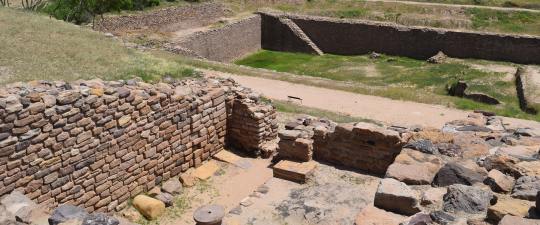
Embark on an adventure from Mumbai to Dholavira. Explore ancient ruins, unraveling the mysteries of the Harappan Civilization's rich history and culture.
#dholavira tourist guide#dholavira tourism#dholavira tourism places#places to see in dholavira#places to stay in dholavira#dholavira
0 notes